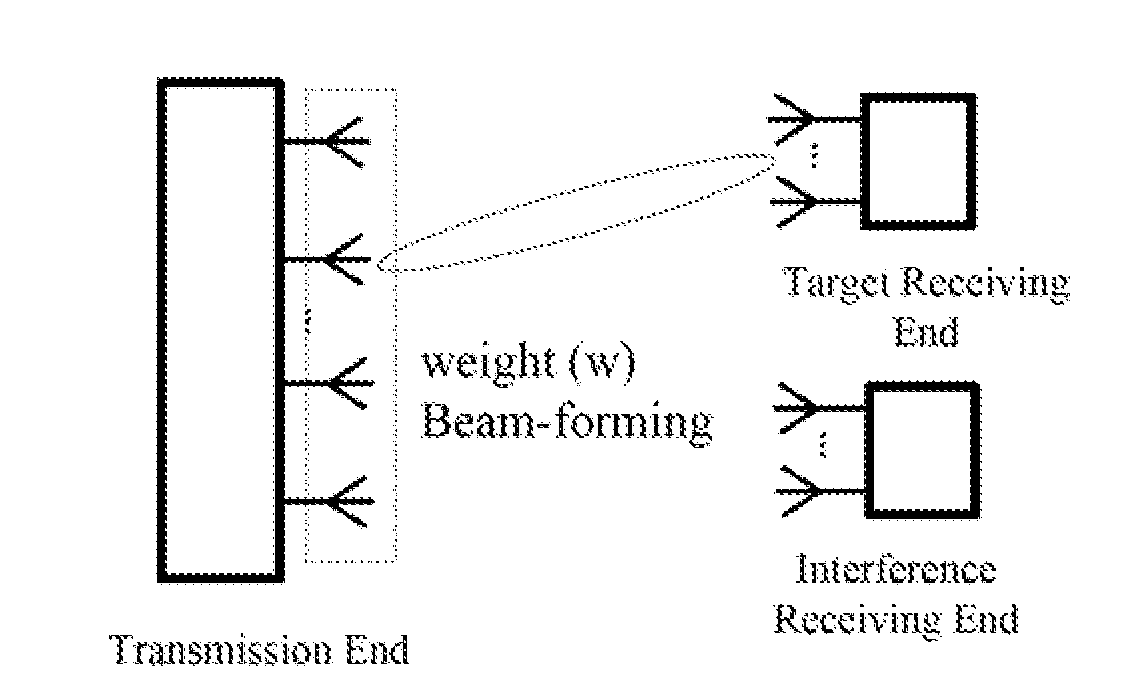Downlink Resource Scheduling Method and Transmission End for Multiple-Input Multiple-Output Beam-Forming System
a beam-forming system and resource scheduling technology, applied in the field of communication, can solve the problems of limited number of accessible users, waste of resources remained in odd-number groups or even-number groups, etc., and achieve the effect of increasing the number of accessible users and saving downlink resources
- Summary
- Abstract
- Description
- Claims
- Application Information
AI Technical Summary
Benefits of technology
Problems solved by technology
Method used
Image
Examples
Embodiment Construction
[0032]The invention is described below in detail by reference to accompanying drawings in conjunction with embodiments. It should be noted that the embodiments and the characteristics of the embodiments can be combined if no conflict is caused.
[0033]The MIMO+BF system can apply the beam-forming system shown in the FIG. 2, wherein the system comprises a transmission end and subordinate users thereof.
[0034]FIG. 3 shows a flowchart of a downlink resource scheduling method for an MIMO+BF system according to the embodiment of the invention; wherein the method comprises the following steps of:
[0035]Step 302: dividing subordinate users by the transmission end into user groups according to respective MIMO+BF weights of the subordinate users;
[0036]Step 304: generating a scheduling priority coefficient for each of the user groups according to scheduling priority coefficients of respective users in the user group;
[0037]Step 306: allocating group resources to the user groups according to the re...
PUM
 Login to View More
Login to View More Abstract
Description
Claims
Application Information
 Login to View More
Login to View More - R&D
- Intellectual Property
- Life Sciences
- Materials
- Tech Scout
- Unparalleled Data Quality
- Higher Quality Content
- 60% Fewer Hallucinations
Browse by: Latest US Patents, China's latest patents, Technical Efficacy Thesaurus, Application Domain, Technology Topic, Popular Technical Reports.
© 2025 PatSnap. All rights reserved.Legal|Privacy policy|Modern Slavery Act Transparency Statement|Sitemap|About US| Contact US: help@patsnap.com



